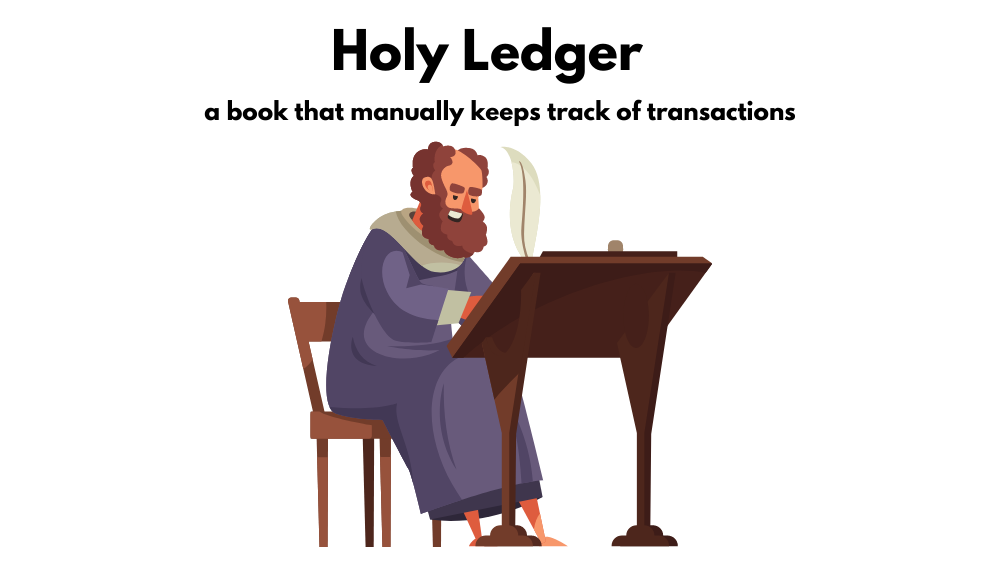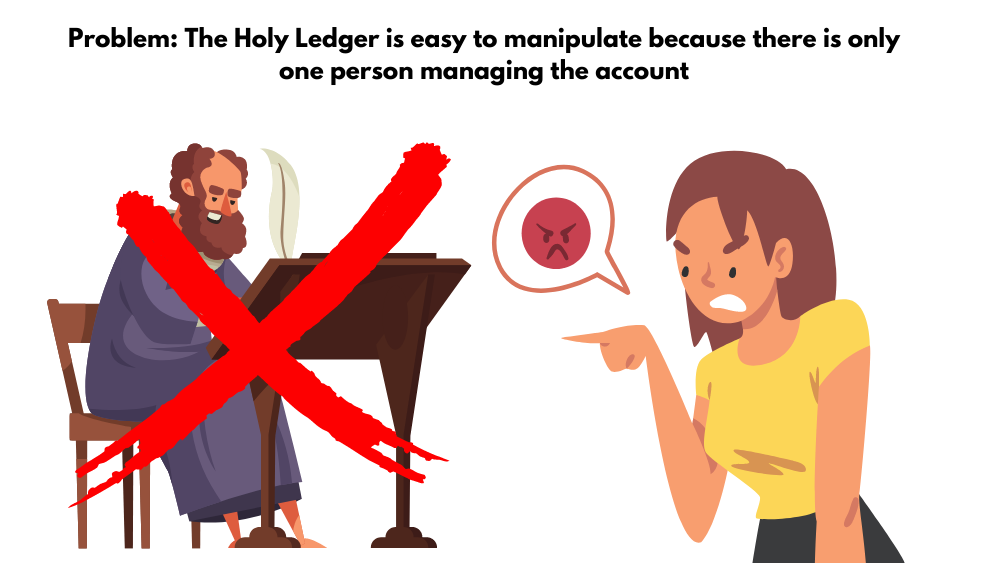The Story of a Village
Once upon a time there was a village of 10 families. Each of them had different jobs to make the village sustainable. They trusted each other so the hunter would let the farmer get some meat on credit for when the harvest came. However, as they traded more and more it became harder to tell who owed who how much. So, they decided to appoint Ledgerman to keep track of all the transactions and write every transaction on paper. Ledgerman called this paper the Holy Ledger.

Ledgerman realized how powerful he was and if he took a small cut of each transaction he would make a lot of money, so he started taking a transaction fee. The villagers didn’t like this new fee, but they would rather pay it than not know who owes who.
However, one day Ledgerman got greedy and decided to take a bribe to say that Cowfarmer owed Ricefarmer money. When Cowfarmer found out that he owed the money he protested, but there wasn’t much he could do. However, after the third complaint that Ledgerman was faking transactions, the village decided to fire Ledgerman.

After thinking how they can keep track in a way that cannot be corrupted, the villagers came up with a new system. Every day at noon the village would gather to trade. When 2 people agreed on a trade they announced it on the loudspeaker, and everyone would keep track of all transactions on their own Ledger. Then on Saturdays everyone would read out their list and make sure there were no discrepancies; if there were any, they would check everyone’s list and whatever was the majority would be confirmed.
Using this new method they didn’t have to pay anyone a transaction fee. No one person could scam the system. If someone tried, then everyone else would know and punish the scammer.

This is great for a small town who is gathering every day but this method is too slow and manual for larger towns.
